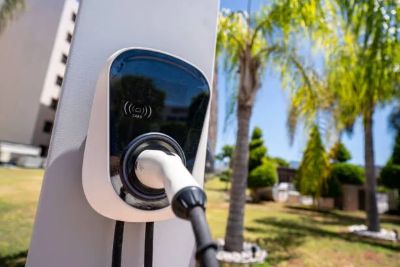


Safety Tips for EV Charging Stations: A Complete Guide for Home and Public Use
As a leading EV charger manufacturer in China, LiCB Charge offers reliable AC and DC electric vehicle charging stations, along with complete charging solutions.
As electric vehicles (EVs) become more popular, ensuring safety at EV charging stations is crucial. Whether you’re charging at home or using a public station, understanding the potential risks and following safety guidelines is essential for a safe and efficient charging experience. This guide offers safety tips for different charging levels, home and public charging practices, and general safety measures.
There are three main EV charging levels: Level 1, Level 2, and DC Fast Charging (Level 3), each with varying power requirements and safety considerations.
Level 1 Charging:
Level 1 uses a standard 120-volt household outlet, adding about 3-5 miles of range per hour. It’s slow but convenient for overnight charging.
Safety Tips: Use a dedicated outlet, avoid extension cords, and ensure the charger is UL-certified. Inspect the cord regularly for damage.
Level 2 Charging:
Level 2 uses a 240-volt outlet and charges faster than Level 1, adding 20-60 miles of range per hour. It’s commonly installed at homes and workplaces.
Safety Tips: Hire a licensed electrician for installation, use a dedicated circuit, and install weather-resistant equipment if outdoors.
DC Fast Charging (Level 3):
This level offers rapid charging, delivering up to 80% charge in 20-40 minutes. It’s primarily found in public charging stations.
Safety Tips: Use certified public stations, avoid forcing connections, and monitor the charging progress.
Regardless of the charging level, these tips apply universally:
Use Certified Equipment
Ensure that the charger is certified by recognized testing labs like UL, CSA, or ETL to meet safety standards.
Avoid Water Exposure
Don’t charge in wet conditions unless the charger is rated for outdoor use. Use weatherproof covers and dry off connectors before use.
Install a Residual Current Device (RCD)
An RCD prevents electrocution by detecting electrical imbalances. Many Level 2 chargers include this protection, but it’s worth considering an external RCD for extra safety.
Keep Components Safe
Store cables and connectors out of children’s reach to avoid accidents.
Routine Inspections
Regularly check cables and plugs for signs of damage or wear, and replace damaged parts immediately.
Installing a charger at home requires careful planning to ensure safety:
Hire a Qualified Electrician
Hire a licensed electrician to assess your home’s electrical capacity, install the charger correctly, and ensure compliance with local regulations.
Choose the Right Location
Ensure the installation site has adequate ventilation, is protected from water, and provides easy access to the vehicle’s charging port.
Check Permits
Some regions require permits for EV charger installation, so check with local authorities before proceeding.
When using public EV chargers, follow these tips:
Park Considerately
Don’t leave your vehicle parked at a charging station longer than necessary, especially after charging is complete.
Inspect the Equipment
Before use, ensure the charger and cables are undamaged. Report any issues immediately.
Avoid Blocking Cables
Park in a way that allows the cable to reach your car without obstruction.
Stay Alert
Be aware of your surroundings, especially in unfamiliar or poorly lit areas.
As EVs continue to transform transportation, safe charging practices are essential. By following these safety tips for both home and public charging, you can protect yourself, your vehicle, and others. Regular maintenance, careful installation, and certified equipment will ensure you enjoy the convenience of EVs without safety concerns.Know more about Google SEO Directory
